Do Grandmasters use Classic Chess Sets?
Chess, the ancient and noble game of strategy and intellect, has captivated enthusiasts for centuries. Its classic design and timeless appeal have endured the test of time.
In this article, we delve into the artistry and craftsmanship that goes into creating a classically styled chess set, sometimes known as "Down head" or "German" design, meticulously hand-carved and turned using the exquisite materials of Acacia wood and Boxwood. We will explore the process from start to finish, beginning with the selection of kiln-dried timber, the hand-carving process, and the finishing touches of weighting and felting. Finally, we will discuss the importance of a drawstring bag to complete the presentation and protect these works of art.
The Classic Elegance of Acacia and Boxwood
When we think of classic chess sets, our minds often conjure images of beautifully carved wooden pieces. Among the most revered materials for creating these timeless works of art are Acacia wood and Boxwood. These materials not only offer a striking contrast in colour but also possess qualities that make them ideal for the creation of chess pieces.
-
Acacia Wood:
- Acacia wood, known for its rich, warm tones, is an exceptional choice for the darker pieces in a chess set.
- It is a dense and durable hardwood, ensuring that each piece will stand the test of time.
- The intricate grain patterns of Acacia wood add a touch of natural beauty to the chess pieces.
-
Boxwood:
- Boxwood, with its creamy white colour, is a perfect complement to Acacia wood.
- This fine-grained wood is easy to carve and lends itself to intricate detailing, a must for a beautifully designed chess set.
- The uniform colour of Boxwood ensures that the contrast between the two woods is both striking and elegant.
The Art of Selection: Kiln-Dried Timber
The process of crafting a classically styled chess set begins with the careful selection of the finest kiln-dried timber. The importance of kiln-dried wood cannot be overstated. This meticulous drying process removes excess moisture from the wood, which helps to:
- Prevent warping, cracking, and other deformities.
- Ensure the stability and longevity of the chess pieces.
- Enhance the wood's natural characteristics, allowing for precise carving.
Each artisan tasked with creating these exquisite chess sets must possess a discerning eye for selecting the best pieces of Acacia and Boxwood. Only through the careful selection of high-quality timber can the true beauty of the woods be revealed in the finished chess pieces.
Hand-Carving and Turning: The Heart of Artistry
The essence of the Down head or German design chess set lies in the intricate artistry involved in hand-carving and turning each piece. This process requires skill, precision, and a deep appreciation for the game of chess as well as the art of woodworking.
-
Hand-Carving:
- The process of hand-carving chess pieces is a painstaking one, with each piece being individually sculpted to perfection.
- Skilled artisans use traditional woodworking tools, such as chisels and carving knives, to shape the pieces.
- The artisan's expertise ensures that every detail is meticulously brought to life, from the knights' intricate manes to the queens' regal crowns.
-
Turning:
- Turning involves creating the distinct, cylindrical shapes of pawns, rooks, bishops, and the king and queen's bodies.
- A lathe, a specialized woodworking tool, is used to achieve the symmetrical forms that are the hallmark of the Down head or German design.
- The lathed pieces are then finely sanded to create a smooth, flawless finish.
The combination of hand-carving and turning results in chess pieces that are both elegant and functional. These works of art are not only meant for play but also for display, as they are a testament to the dedication and skill of their creators.
Weighting and Felting: Ensuring Balance and Elegance
Chess is a game of strategy and precision, and the same principles are applied to the creation of chess pieces. To ensure the perfect balance and playability of each piece, they are weighted and felted.
-
Weighting:
- Weighting involves adding a small amount of weight to the base of each chess piece.
- This weight, usually made of metal, provides stability and prevents the pieces from easily toppling over during play.
- The added weight also contributes to the overall feel of the pieces, making them substantial and satisfying to handle.
-
Felting:
- The bottom of each chess piece is fitted with a soft felt pad.
- This pad not only protects the chessboard from scratches but also allows for smooth and silent movement during play.
- The felted base also adds a touch of elegance to the pieces, as they glide effortlessly across the board.
Weighting and felting are essential steps in the creation of a classically styled chess set. These finishing touches ensure that the pieces are not only visually stunning but also practical and enjoyable to play with.



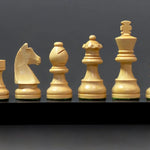
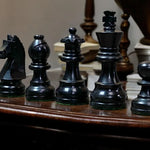
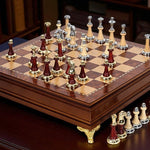
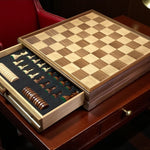
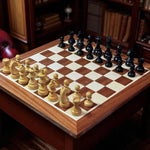
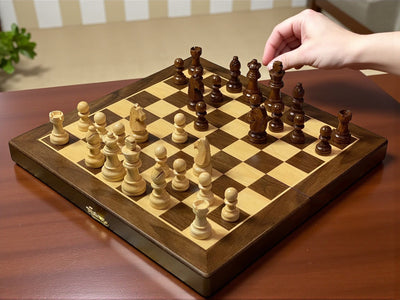
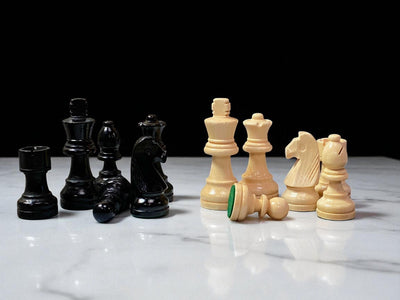
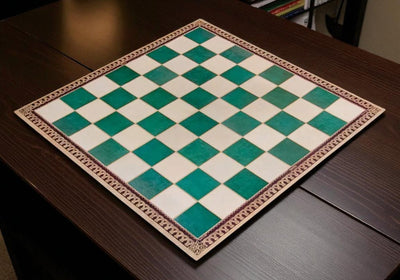
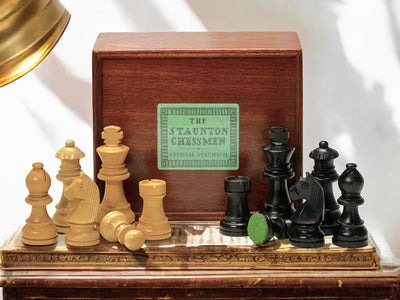
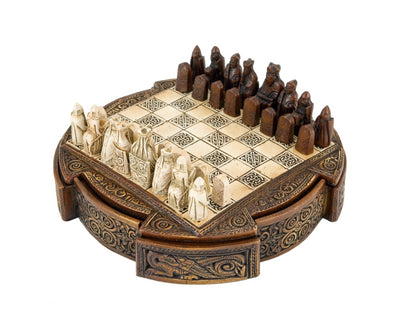
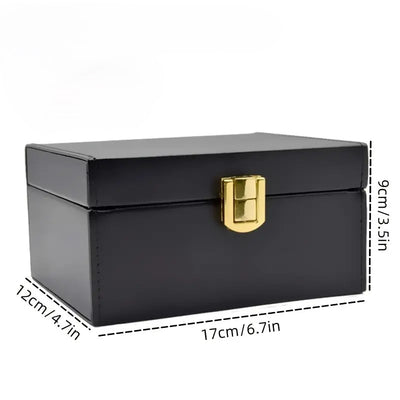
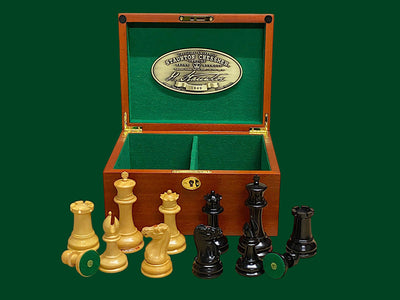
Leave a comment